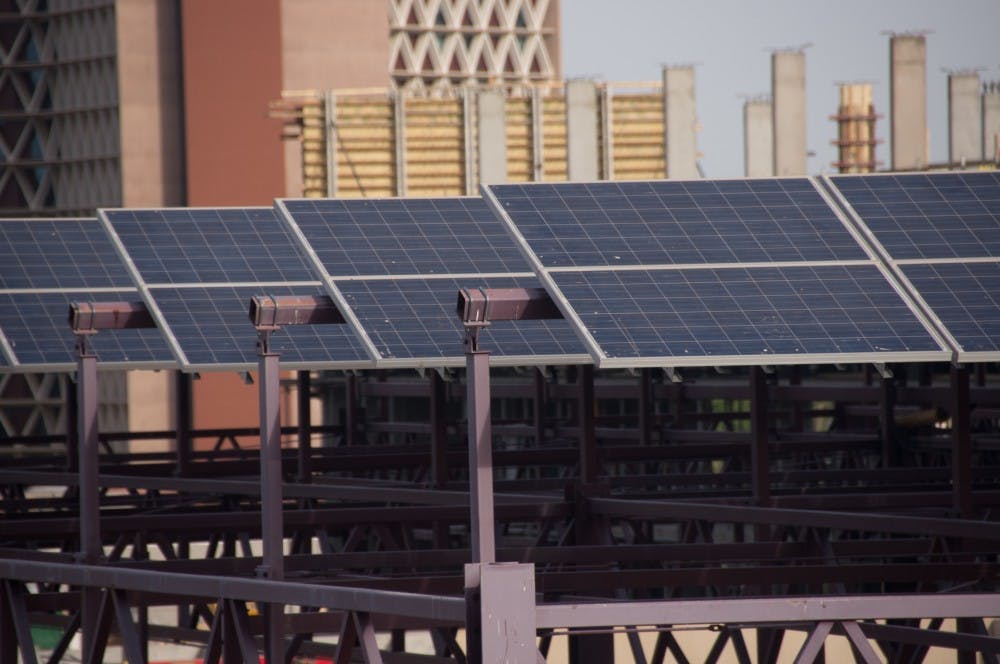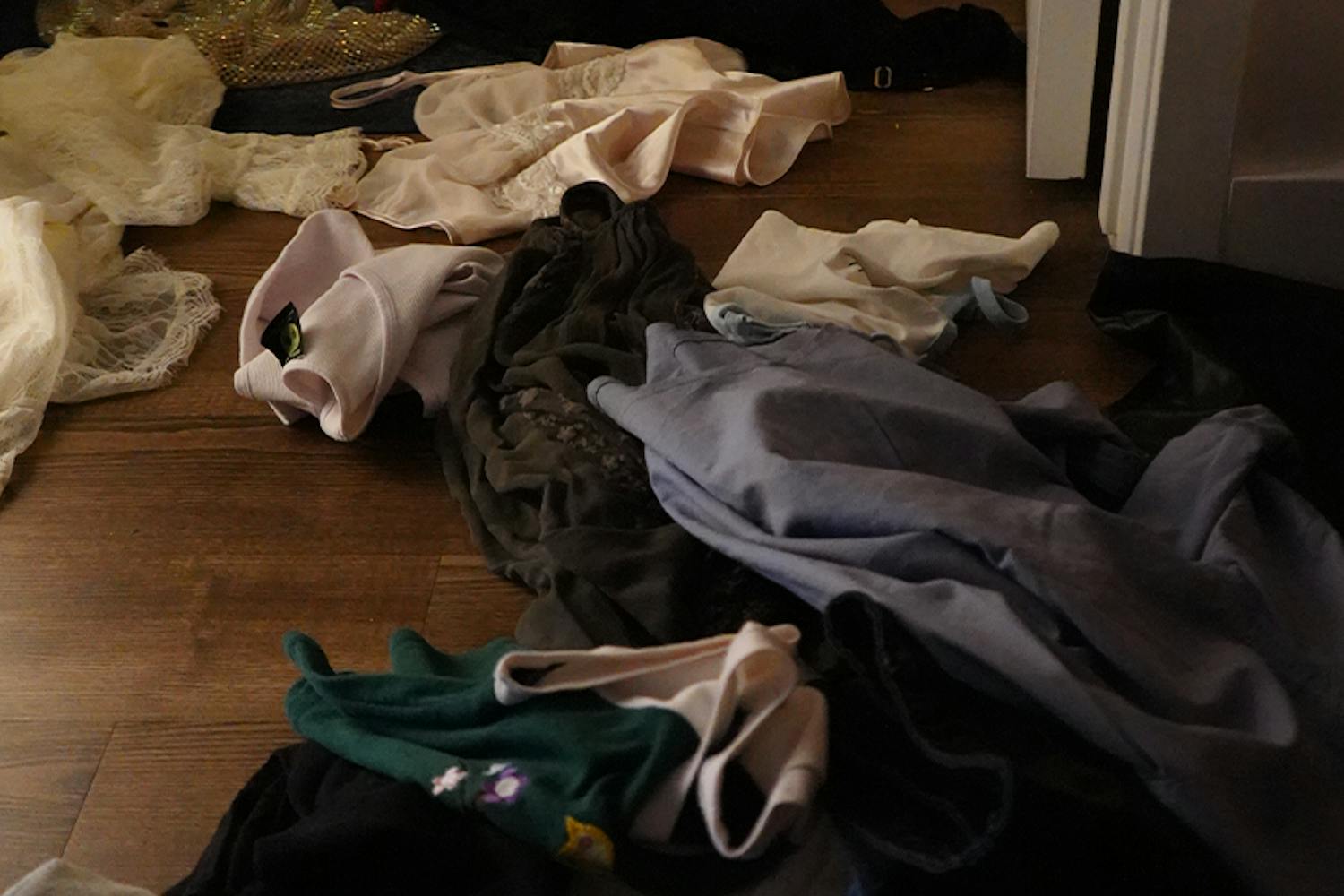Traditionally, the best way to integrate solar technology with the surrounding architecture has been to use it as shade — anyone who has dipped and ducked their way through the crowds on Cady Mall only has to look up to verify this.
That shaded patio, one of the most populated spots on campus, generates 123,442 kWh of energy annually, according to ASU Solar's website. That's enough to power a dozen homes, and Cady Mall is only one of 88 solar systems at ASU.
But a company called SolarWindow is looking to shake up this established trend.
Aptly, rather than use their panels to provide shade, SolarWindow uses theirs to provide light.
SolarWindow's technology uses an organic liquid coating to tint windows on skyscrapers, simultaneously using those windows to generate energy. The process allows them to coat all four sides of a building at a much lower cost than traditional photovoltaic panels.
SolarWindow's CEO John Conklin has taken a very hands-on approach to getting this concept up and running.
"I guess the best way to put it is I'm an entrepreneur who understands the science and the engineering, so it's not unusual for me to be at the bench with the organic chemists and the materials scientists," Conklin said.
He runs the company from New York, but the team is spread out all across the country. There are divisions working from Colorado, Georgia, North Carolina and Washington, D.C.. These groups have come together under the common goal of distinguishing themselves from the rest of the solar industry.
"Think of SolarWindow technology as a clean tech company, not a photovoltaic company," Conklin said. "Take an ordinary piece of glass, put our coating on it, and now that glass generates electricity."
With that ambition, however, comes obstacles.
"The transparency means that they are not harvesting all the light, and that's actually why they're less efficient," André Augusto, a postdoctoral research assistant at the ASU Solar Power Lab, said. "What they can claim is that it's so cheap to do it and you have so much surface on a building that, in terms of energy production, it's big because they have a big surface and it doesn't cost much to cover it. But efficiency will never be very high because light is going through it."
Augusto said that the panels over Cady Mall pump out energy from the suns rays at around 18 percent efficiency. He said that, while transparent solar technology has been making the rounds since 1995, citing solar engineer Paul Basore's efforts, researchers have typically been unable to get the efficiency over 6 percent.
In spite of this, Augusto acknowledges that there are advantages to the SolarWindow tech.
"If you are targeting buildings, you have architectural constraints, and architects are very picky about what you put in their buildings. If you can sell your product as a low interference (photovoltaic) technology, people will not be aware that the system is there."
Dwain Schenck, a PR representative at SolarWindow, said that the company is looking to take a global approach to distributing its technology. Its not unlikely that their panels could find their way to Phoenix in the near future.
"We're at a cross roads, and that cross roads intersects with climate change and natural resources, and right in the middle lies the ever increasing need for energy," he said. "We believe we've got a great opportunity."
Reach the reporter at sdeadric@asu.edu or follow @deadrick_sam on Twitter.
Like The State Press on Facebook and follow @statepress on Twitter.




